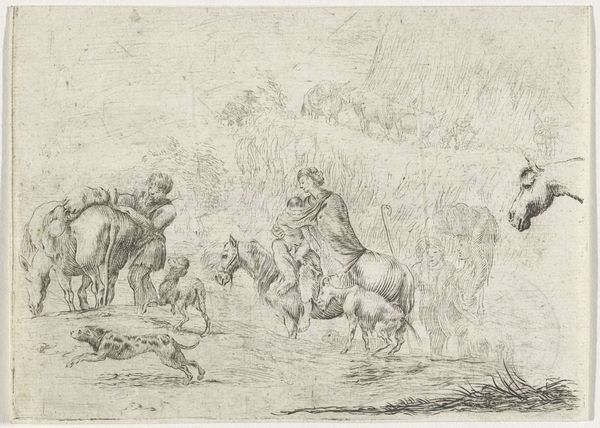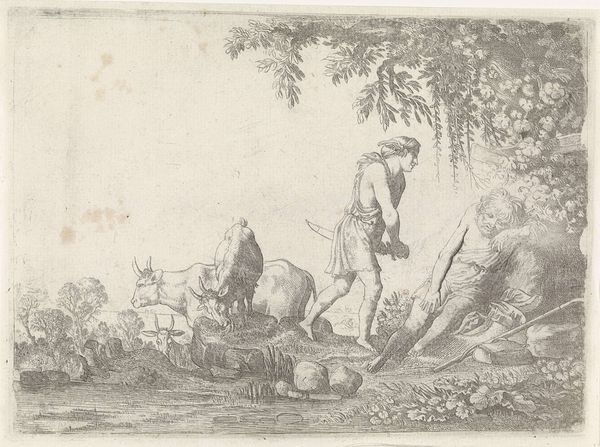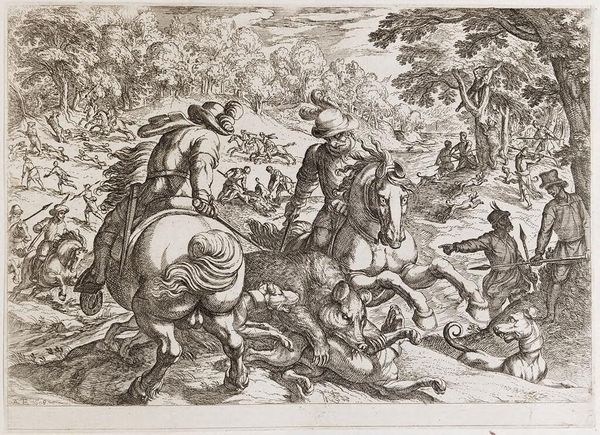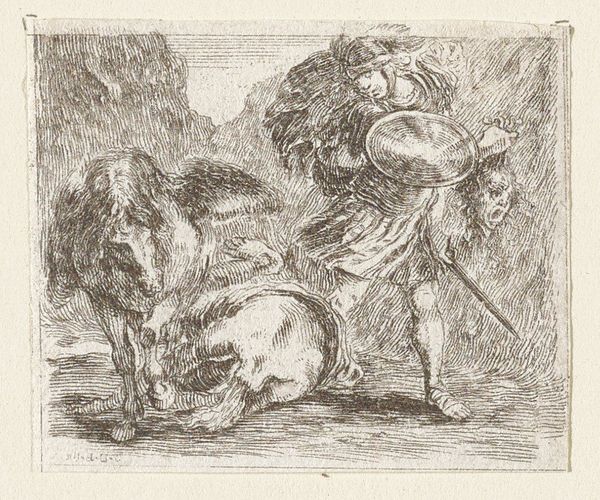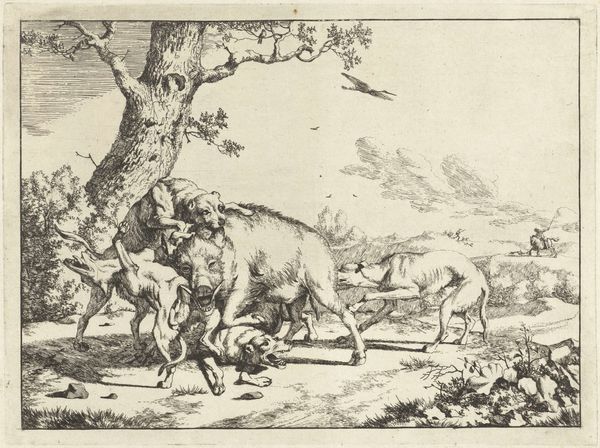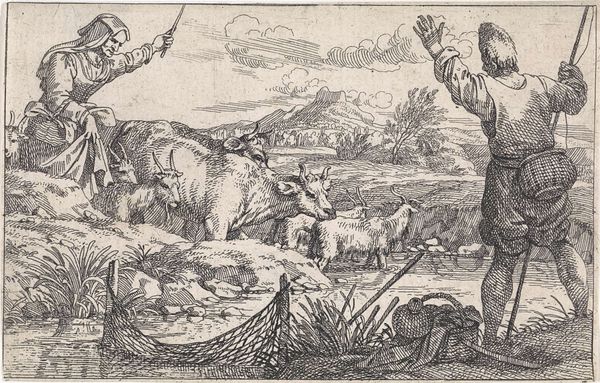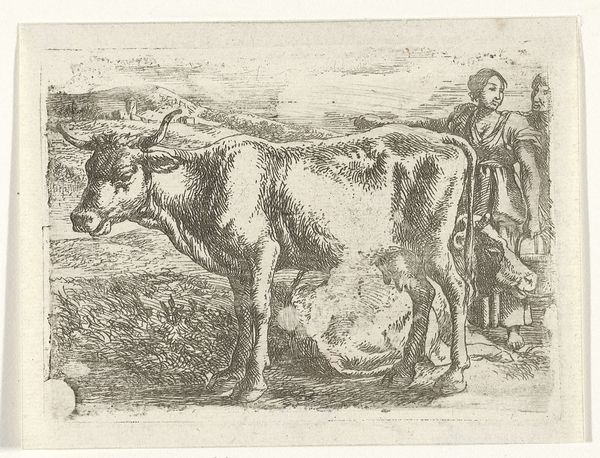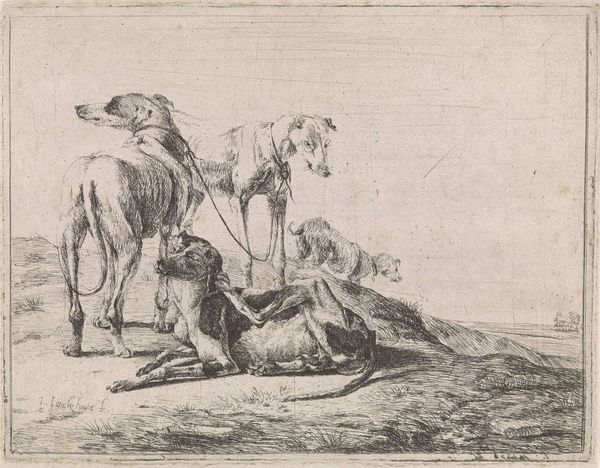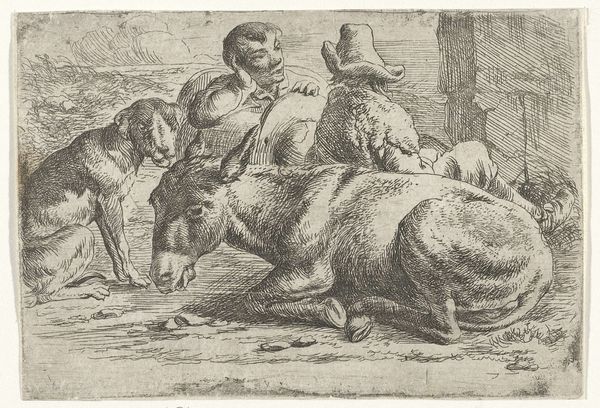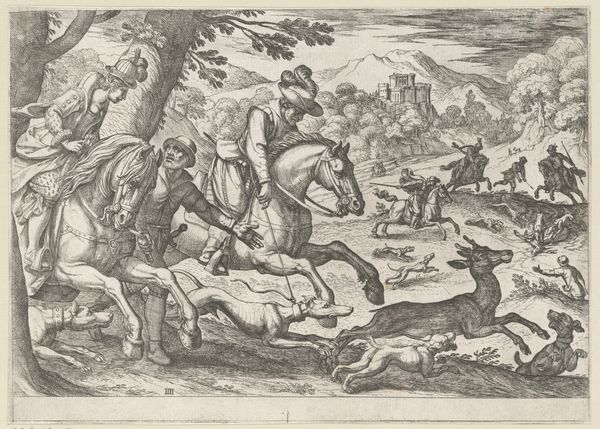
print, etching
#
narrative-art
#
baroque
# print
#
etching
#
landscape
#
figuration
#
line
Dimensions: height 149 mm, width 269 mm
Copyright: Rijks Museum: Open Domain
Curator: This etching, crafted by Stefano della Bella between 1620 and 1664, captures a dramatic scene titled "Ree gevangen door twee jachthonden," or "Deer caught by two hunting dogs." It now resides at the Rijksmuseum. Editor: It strikes me as remarkably brutal, but there's an undeniable skill in how Bella has rendered the dynamism of the chase, all with these fine lines. Curator: Indeed. Note the baroque sensibilities present in the composition's use of dynamic line, the creation of spatial depth. There is an interplay between open areas and meticulously detailed zones, guiding the eye. The line's quality, too, shifts across the surface in terms of weight and density. Editor: And, of course, etching itself is hardly a straightforward process. Consider the physical labor, the precise application of acid, the layering of marks…it's demanding craftwork meant to convey aristocracy at leisure and dominance over the natural world. Who actually manufactured the acid that eats into these plates? How did Della Bella, or those around him, think about its effects? Curator: To press that further, we can analyze this image in terms of the ideological function that aristocratic patronage assumes here, and its articulation via natural forms; the animal as a signifier of raw and untamed, natural energy—as something requiring discipline and control. The success of the hunt, and by extension of governance. Editor: You see it as a celebration of control. I also see how the dogs' straining muscles and the panicked deer convey desperation, a raw fight for survival, a reminder of our own precarious hold. Those dogs, though bred and trained, were not necessarily immune to injuries suffered during this hunt. And their social utility depends largely on successfully capturing the quarry, for whom the stakes are even higher. The economic underpinnings are central to such social arrangements, the value ascribed to all players. Curator: Yes, it's a complicated articulation of those relationships through line and form and space... Editor: Precisely! So much material and labour goes into representing an ephemeral hunt! Ultimately, it points to an ever-churning cycle of labour and material, violence and class that's central to the period and this artwork.
Comments
No comments
Be the first to comment and join the conversation on the ultimate creative platform.
